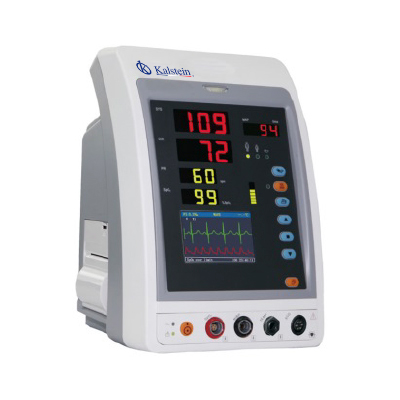Monitors that record patients’ vital signs, such as pulse, temperature, respiration, oxygen saturation and blood pressure, are overwhelming because of all the numbers, abbreviations, wavy lines and alarms. To understand the mechanism of the monitors, it is necessary to consult a physician and to indicate the meaning of each recording.
It should be noted that the recordings are obtained by small sensors connected to the body, which send the information to the monitor. Some sensors are patches that adhere to the skin, while others can be attached to one of your fingers. The most basic monitors are capable of showing heart rate, blood pressure and body temperature, but with advances in technology, they record the amount of oxygen carried by the blood, the speed at which the patient breathes and they can even show how much pressure there is in the brain or how much carbon dioxide is exhaled.
Interpreting vital signs in the Monitor
Accordingly, the functions of each monitoring line are explained below:
- Pulse frequency PR, which represents the patient’s pulses, usually normal pulse frequency for an adult is between 60 and 100 beats per minute. For example, if the number on the monitor registering PR says 85, the person’s pulse rate is 85.
- Temperature, represented by the abbreviation “TEMP”, the number reflected on the monitor indicates the person’s body temperature. In this case, if 36.8 (98.2) is reflected in the temperature section, it means that the person’s temperature is 36.8°C (98.2°F).
- Blood oxygen level, represented by the acronym “SpO2”, represents the amount of oxygen in the blood. Ideally, this figure should be 95% or higher, but it could be lower due to illness or injury. If the number is below 90%, his oxygen saturation is considered low and probably requires oxygen.
- Respiratory rate, known as “RR”, is the number of breaths a person takes in one minute. However, it can increase due to injury or illness, so the number could be higher than 16. The number could also increase if the person is moving or talking.
- Systolic (SYST) and diastolic (DIAS) blood pressure. The abbreviations SYST and DIAS stand for systolic and diastolic, respectively. Together, they form the measure of a person’s blood pressure. Locate these two numbers to determine a person’s blood pressure. A normal reading is between 90/60 mmHg and 120/80 mmHg. So, if the systolic number is 110 and the diastolic number is 75, your blood pressure or arterial pressure will be 110/75 mmHg.
Reading monitor lines in patients
The line and wave readings that reflect each patient’s vital signs monitors, is a warning of the state of health that lies at that moment, generally, it’s good if one or more monitor numbers are out of the normal range. This may indicate a problem in some cases, but is not usually a cause for concern. If you notice that one of the values or waves on the monitor is wrong, it is advisable to consult the patient’s doctor or nurse. In accordance with the above, readings are taken as follows:
- Heart functions when observing the lines of the electrocardiogram (ECG), are interpreted to find out about any problems with the person’s heart rate, such as arrhythmia or irregular heart rhythm, reflected in lines in the ECG section, are usually green and have sharp peaks instead of waves as the other two lines on the monitor correlate with heartbeats. The waves and peaks correspond to a specific event in the heartbeat cycle.
- SpO2 and ECG waves are generally represented by a blue line. These wavy lines help doctors detect circulation problems, such as oxygenated blood not reaching a person’s limbs. Each wave on this line should correspond to a peak on the ECG line, so that waves and peaks occur in the same intervals.
- RESP wave to see how well a person is breathing, each wave on this line indicates a breath the person has given. Healthcare professionals can use this section of the monitor to observe breathing problems, such as when someone suddenly stops breathing (apnea) or has difficulty breathing (dyspnea). This line is usually yellow or white.
Vital signs monitoring in Kalstein
We manufacture the best medical equipment the market has to offer, we have the best advice to help you have no doubts about your purchase, at the best prices only Kalstein can offer. We have for you the most advanced semi-modular monitors of medium and high complexity, specially designed for use in UCI, Pavilion and Emergency in adults, children or neonatals. The Q5 model features a large 12.1″ color TFT LCD screen, with anti-glare system and Touch Screen function, plus battery backup for up to 3.5 hours. It can also be connected to a central monitoring station and incorporates a protocol for connection to HIS, CIS, LIS and PACS systems, as well as a 2G SD memory card slot. Basic parameters included: ECG, ST, Arrhythmia, Respiration, 2 Temperature, SpO2, Non-invasive Pressure, IBP. Additional parameters and options: SpO2 Masimo (Rainbow), SpO2 Nellcor, 2 to 8 Invasive Pressures, Anesthetic Agent Analysis, CO2 (MainStream, SideStream, MicroStream), FiO2, Invasive and Non-Invasive Cardiac Output, print module.
See our catalog on our page HERE

